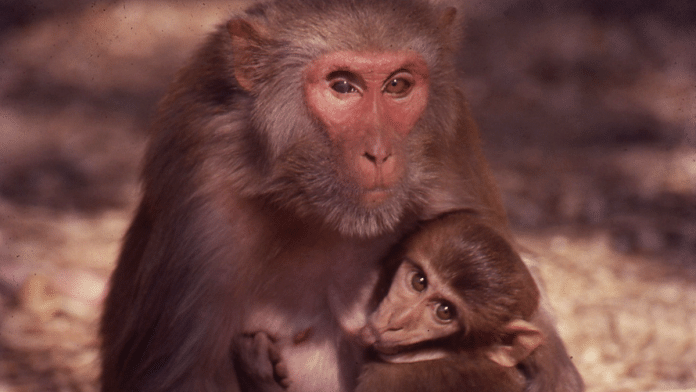Thank you dear subscribers, we are overwhelmed with your response.
Your Turn is a unique section from ThePrint featuring points of view from its subscribers. If you are a subscriber, have a point of view, please send it to us. If not, do subscribe here: https://theprint.in/
Who are Wild and who are Domestic ?
Wild animals are those that live in their natural habitats, independent of human control. They exhibit instinctive behaviors, rely on their own abilities to find food, shelter, and reproduce, and are adapted to survive in diverse ecosystems—forests, grasslands, deserts, mountains, wetlands, or even human-constructed spaces like temples and forts that have evolved into green habitats.
In contrast, domestic animals have been tamed and bred for human use. They live under human care and depend on us for food, shelter, and survival. Domesticated animals are shaped by generations of selective breeding to serve specific purposes—whether for agriculture, transport, companionship, or labor.
The genetic makeup of wild animals is shaped by nature and evolution. In contrast, domestic animals have been genetically altered over time by humans for specific traits.
Why do wild animals need protection?
Interestingly, although domestic animals appeared on Earth long after wild animals, their numbers are now vastly greater. Yet they occupy much less land and enjoy a higher survival rate—precisely because of their dependence on and protection by humans. This imbalance is a key reason why governments and NGOs around the world like IUCN( International Union for Conservation of Nature, is a global union of governments and civil society organizations dedicated to conserving nature and ensuring sustainable development. It’s the world’s largest and most diverse environmental network, working to protect biodiversity and address challenges like climate change through scientific research, field projects, and policy influence) have prioritized the protection and conservation of wild species.
Understanding the Status of Rhesus Monkeys
The rhesus macaque (Macaca mulatta) is listed as “Least Concern” on the IUCN Red List. This means the species is not currently considered endangered or vulnerable. Please remember the IUCN has not delisted rhesus monkeys.
In India, the Wildlife Protection Act of 1972 was a landmark law enacted to safeguard wild animals, birds, and plants. It established protected areas, penalized poaching, and formalized wildlife governance. Under this Act, rhesus monkeys were listed in Schedule II, recognizing them as wild animals in need of protection.
But if rhesus monkeys were legally protected as wild animals, how—and why—were they delisted?
A History of Exploitation
During the 1960s and 70s, rhesus monkeys—unquestionably wild animals—were trapped in large numbers and exported, particularly to the United States, for use in scientific and military research. Despite their Schedule II status under the 1972 Wildlife Act, export continued under government control.
When it became known that these monkeys were subjected to cruel experiments abroad, Indian citizens and NGOs raised strong objections. Their activism led to a complete ban on monkey export in 1978.
The Wildlife Act was strengthened further in 2002. Penalties were increased, and a robust governance structure was introduced with the appointment of Chief Wildlife Wardens, Wildlife Wardens, and Honorary Wildlife Wardens. The National Board for Wildlife (NBWL)—chaired by the Prime Minister—was established to guide national policy.
Yet, despite these protections, in 2022, rhesus monkeys were delisted from Schedule II of the Wildlife Protection Act. This legal change stripped them of their wild animal status and removed safeguards against their exploitation.
Why Were Rhesus Monkeys Delisted?
The timing is revealing. India has seen a surge in foreign pharmaceutical companies and multinational corporations establishing Research & Development (R&D) centers in the country. The government is actively promoting this trend—by easing regulations, streamlining approvals, and providing infrastructure support.
With weaker animal-rights laws and a compliant regulatory environment, rhesus monkeys—no longer protected as wild animals—have become easy targets for experimentation. The Committee for the Purpose of Control and Supervision of Experiments on Animals (CPCSEA), mandated to oversee and curb animal experiments, has remained notably silent on the issue.
This silence is telling. Delisting, in effect, has made rhesus monkeys more vulnerable to capture, abuse, and commercial exploitation. But legal status cannot change biological reality.
Rhesus Monkeys Are Still Wild
No legal amendment can undo the fact that rhesus monkeys are wild animals—genetically, behaviorally, and ecologically. They continue to play an important role in ecosystems, in human cultural landscapes, and in biological research—not as test subjects, but as sentient beings sharing our environment.
Stripping them of legal protection does not make them any less wild—it only removes their shield against harm.
Who Decides What Is Wild?
As per the amended Wildlife Protection Act 2022, which came into force from April 1, 2023, the rhesus macaque was delisted.
The delisting of rhesus monkeys raises a larger ethical question: Who has the right to decide whether an animal is wild or not? Should such decisions be driven by science, ecology, and ethics—or by commerce and convenience?
If the laws do not serve justice, perhaps it is time to change the laws—or those who make and enact them.
These pieces are being published as they have been received – they have not been edited/fact-checked by ThePrint.


